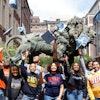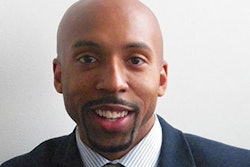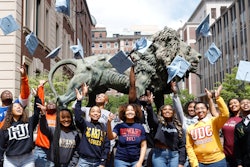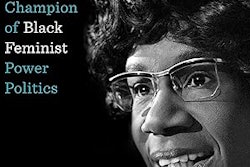Now that college football season is in full swing again, millions of fans will be planted in front of their televisions cheering on their favorite teams. Thousands of other fans who can procure tickets will watch the games in person, and many of these folks will be alumni of one of the two teams competing on the field – both teams are likely to feature star players who are young men of color.
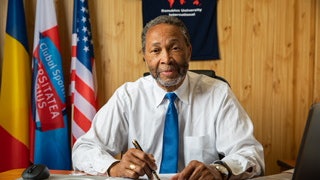 Dr. William B. Harvey
Dr. William B. Harvey
These future collegiate athletes, and their families, will be informed in no uncertain terms that the institutions represented by the coaches offer welcoming and supportive environments to facilitate their development and meet their needs. What the recruiters probably won’t say is what has happened over the past few months, when some of the institutions they represent have taken demonstrable steps backward in establishing and maintaining a welcoming and supportive environment for students of color who don’t happen to have athletic prowess.
Colleges and universities in states that have passed legislation prohibiting offices and personnel that provide services in support of diversity, equity, and inclusion will probably still seek to enroll students of color who are athletic phenoms, especially in the high-revenue sports of football and basketball. Thus far, Florida, North Carolina, South Dakota, Tennessee, and Texas are the states that have outlawed DEI offices and efforts at their public universities, but a disturbing number of other states have similar bills at various levels of consideration. As they seek to parade young men of color in front of crowds of spectators to display their athletic talents, while discouraging the matriculation of their brothers and sisters, this dichotomy places the affected universities into a classification of “gladiator institutions.” When the parents and guardians of the prospective recruits recognize the moral paradox that confronts them, expect them to respond to this latest phase of the struggle for civil and human rights by choosing to enroll their sons in institutions that acknowledge the impact that structural racism continues to exert on their communities.
Governors and other legislative officials who have determined that, as the nation becomes more diverse, academic institutions in their states should move backward rather than forward, have created a situation where outstanding athletes will choose to take their talents to locations where their culture, history, and backgrounds are celebrated rather than reviled. It doesn’t seem likely that league championships and national acclaim (along with the added revenue that they bring) are in store in the foreseeable future at places that will be characterized as untenable destinations for the most talented athletes. All things being equal, these young men will enroll in colleges and universities that recognize and respect their talents as well as those that are possessed by other members of their community.
What will be interesting is the after-the-fact posturing and the tortured reasoning presented by institutional representatives to convince these star athletic recruits that the elimination of services that support those “other” students really shouldn’t be a factor in where they choose to manifest their talents. Nor is anyone likely to acknowledge the hypocrisy demonstrated by the fact that, a short time ago, these same universities proclaimed to the world via their websites that diversity, equity, and inclusion were core values of the institutions. One can also anticipate an onslaught of rabid proclamations from conservative zealots that denounce any concerted efforts to steer recruits of color toward institutions in states that support DEI as the “politicization” of college athletics and another example of the “woke” agenda run amok.
Current circumstances bring to mind the historic and heroic actions of four African American students from an earlier generation. Franklin McCain, Ezell Blair, Joseph McNeil, and David Richmond took it on their shoulders as freshmen at North Carolina A&T State University to challenge the laws and customs of racially segregated American society by sitting down at the lunch counter of the Woolworth’s department store in Greensboro, North Carolina. They created an example for other students across the nation and demonstrated how individual actions can ignite a wave of social change that transforms the status quo. Now, the current group of African American athletes is uniquely positioned to help motivate society to stay true to its ideals of equal opportunity and justice for all through the policies and practices of its academic institutions. For these young men, this is their time, and they are ready.
Dr. William B. Harvey serves as Distinguished Scholar at the American Association for Access, Equity and Diversity in Washington, DC.





